My quest and this blog are about Berkeley.
The photos here are from a house with a Berkeley zip oode. That is the truth. It may not be the whole truth, but it is the truth and nothing but the truth. No need to cross-examine on this point.
So we will proceed with it.
Fall colors – the courtyard as you enter.
These seven-foot statues stand in the courtyard of the Berkeley zip code home of Arlene Mayerson and Allan Tinker. The ladies are the work of Leslie Safarik, an Oakland sculptor who works in ceramics. Mayerson accessorizes them, here with basket, bag, lei, and hat. Wonderful addition! Their names are Doris and Hazel. Tinker decides each day which is Doris that day and which is Hazel.
Mayerson drapes them when the spirit moves her – sometimes twice a day, sometimes once a week. She can’t help herself, she just loves to drape. On my second visit, they were significantly different than on my first.
Mayerson saw Safarik’s work years ago at the Coda Gallery in Park City, Utah, and so she knew what she was seeing when she drove by Ohmega on San Pablo and saw three of Safarik’s joyous women. She tracked Safarik down and bought these two.
They are not alone in the courtyard.
This steel rocking chair is the work of the late Emil “Izzy” Sher (1912-1999), who came to the United States from the Soviet Union. He landed in Berkeley in the early 1950s. In 1954 he opened The Wire Shop on Bonita Street. From there and his home on Virginia he made art. He worked primarily with steel and wire, but he also painted, worked with clay, and worked with concrete. Sher’s son Zalman sold off many pieces in April, 2015 – I wrote about the sale in Berkeleyside. Mayerson and Tinker bought the rocking chair at the sale.
This is the first piece created by Mayerson that you encounter. They are many more inside the house.
A shoe made from beach trash, mostly rope, by Mark Olivier. I think that he called it, simply, Espadrille. McGuire Real Estate on College just south of Ashby had the shoe in its window. Mayerson and Tinker bought it. A green French Poodle (“Best in Show”) made by Olivier is now in the McGuire window. Mayerson covets it, but her family does not.
That, my Quirky Berkeley friends, is a great start. Safarik, Olivier, Sher. Mayerson and Tinker say that they went big in the courtyard. My friend’s friend Daniel would say that the artworks in the courtyard shine as the brightness of the firmament. Daniel is fond of Aramaic court tales because of their emphasis on the wisdom of the courtier whose skill and cunning save the day in settings of danger and confrontation. Daniel’s choice of words here reflects his appreciation of the language of the court tales.
A short word about Mayerson and Tinker, emblematic of what is good and intriguing about Berkeley.
Arlene Mayerson is a civil rights lawyer. She came of age in the decades when many of us cared. After graduating from Boston University, she tried her hand at community organizing in Dorcester, Massachusetts. Organizers from the communities of color where she was working told her that they had the organizing part covered and suggested that she do something that they couldn’t do – go to law school. She came to look at Boalt Hall in 1974 and didn’t turn back.
Her passion as an attorney is fighting for the rights of the disabled. She is really good at it and has done it a long time and accomplished a lot. She has been the Directing Attorney of the Disability Rights Education & Defense Fund since 1981. She was a central force in drafting and passing the Americans with Disabilities Act.
Allan Tinker is a poet. I asked him who his favorite poets were. He mentioned Allen Ginsberg’s Improvised Poetics and June Jordan and her theory of vertical rhythm. He asked me my favorite poet. That’s easy – Robinson Jeffers. Hurt Hawks, the hawk in death with its fierce rush – oh my magnificent.
 His face lit up. He told me of driving a delivery truck in Carmel Valley and getting lost and finding Jeffers’ Hawk Tower. He said: “His poetry sent me there, the planting of those 50 eucalyptus trees adjacent to the tower towered over the neighborhood which otherwise at the time I was there totally hid Jeffers’ house and Hawk Tower in myriad surrounding, stereotypically boring, upscale suburban dwellings.” Robinson Jeffers! We bonded!
His face lit up. He told me of driving a delivery truck in Carmel Valley and getting lost and finding Jeffers’ Hawk Tower. He said: “His poetry sent me there, the planting of those 50 eucalyptus trees adjacent to the tower towered over the neighborhood which otherwise at the time I was there totally hid Jeffers’ house and Hawk Tower in myriad surrounding, stereotypically boring, upscale suburban dwellings.” Robinson Jeffers! We bonded!
He taught writing at Cal. He worked with California Poets in the Schools, drawing poetry out of young people.
He worked with The Beat Within, an organization that offers writing workshops to incarcerated youth. Here is a recently published poem of his – it works for me.
What it all adds up – an amazing couple. They met in 1986 and raised two children with great joy and success. With an amazing firmament of art in their Berkeley zip code courtyard. I wonder what’s inside. Let’s see!
Inside the house is – more art. Lots of art. When did they start collecting? What was the impetus? Arlene answered the questions – “It kind of just started organically.”
It is mostly what would be called folk art. That term commonly refers to art made by peasants or poor tradespeople. The style is naive. That means a traditional rule like proportion is ignored. Perspective, same thing. Mark Bulwinkle rejects the term “folk art.” He points to himself – “Am I a folk?” He points to you – “Are you not a folk? Are we not all folk? Who is not a folk?” Point taken. I am not enthralled with the term either, but I don’t want to belabor it more than I have.
This is a combination of a pencil box from Oaxaca, a vase from a friend, a horse head she found, and a hand she was given, now placed Oh So strategically, either in a gesture of modesty or a fresh touch.
Here she is in an earlier incarnation, before the horse head, the hand, and the naked woman.
Julia Krillova of the Berkeley Potters Guild made these.
There is a cabinet filled with whimsical teapots such as these.
The portrait at the center of this alcove is by Claire Cotts.
Cotts lives and works in Berkeley.
Cotts made several other paintings in the house, including this portrait of daughter Emma Mayerson.
This piece in the alcove was made and sold unpainted, intended to live its live unpainted. Mayerson’s draping/accessorizing instincts kicked in and she meticulously painted it.
In 1953, up and coming painter Robert Rauschenberg tapped into the generosity of Willem de Kooning and talked de Kooning into giving him a drawing. Rauschenberg then spent weeks erasing the drawing, leaving only a faint glow where the lines had been. He framed the erased drawing and showed it with the tag “Robert Rauschenberg – Erased de Kooning Drawing – 1953.” That’s a great story as far as I am concerned, but I don’t think that this is the same deal. I cannot imagine this piece unpainted.
She is Not The Madonna. Mayerson does Not have a Madonna in her living room.
The pieces on the left and right are African art that she bought from Dick and Beany Wezelman. Another Quirky Berkeley connection! The head on the right was Mayerson’s first head – papier mache and dried chili peppers.
The figure on the left is draped with a headpiece from Thailand.
The piece on the right is a Wezelman African piece topped by an ever-changing styrofoam head. The center piece is Mayerson’s work – a metal dress form and a styrofoam head acquired in a lot of styrofoam heads from the East Bay Depot for Creative Reuse. Mayerson drapes her and changes out the head.
On my second visit, she looked nothing like she had on my first visit. Everywhere you look there are styrofoam heads
Mayerson bought a box full of styrofam heads at the East Bay Depot for Creative Reuse. She reused them creatively.
She is an acupuncture model, between two and three feet tall, acquired at Spirit Matters Art Gallery in Inverness.
On the porch, a Peter Reginato sculpture. Reginato is a New York sculptor and painter. Mayerson’s parents collected his work.
Inside, a smaller Reginato sculpture. Also on the porch:
A lovely Picasso woman chair (artist unknown).
This was originally a table – imagine a glass top. Mayerson bought it from Total Estate Liquidation on Telegraph. She never imagined it to be a table.
While at the table, dig these chairs!
Frida is seen in a number of pieces throughout the house. Of course. Mayerson made this Frida box with ribbons and necklace.
This Frieda hangs above the ground floor guest bathroom. Mayerson made her. And drapes her.
This paintings are Mayerson’s work.
Mayerson made the chair, transferring the image of the woman from the painting.
For this chair, she painted directly onto black canvas.
These are the work of Oaxacan potter Dolores Porras.
Just before leaving, I spotted these on the floor. Cool graphics, no? They are bound collections of Readers Digest. What a graphic and cultural statement!
At the end of my second visit I asked about this cat. Cat? What cat? That’s a dog. And then an awakening – oh Good Lord – the beast that they had seen as a dog was, in fact, a cat. A brilliant Oaxacan cat. I added value!
Last thing on my way out the door:
The Obama painting is by Chuck Close, a painter who as a result of a 1987 spinal artery collapse is a quadriplegic. He recovered slight movement in his arms and paints with a brush strapped to his wrist. Courage. Art.
Yikes – they have it all. Creativity. Social justice. Art made. Art collected. Poetry. Energy. Determination. Humor! We are better for having Arlene Mayerson and Allan Tinker in our midst.
I took these photos to show my friend. He was in a pre-Christmas funk with ghosts of Christmas past in Detroit tormenting him. I said we could talk about Detroit in a minute but that I valued his opinion and would like him to look at the photos. He smiled at the photos except the styrofoam heads which, he said, “They freak me totally out.” Okay, but leaving aside the styrofoam heads, what does he think overall?




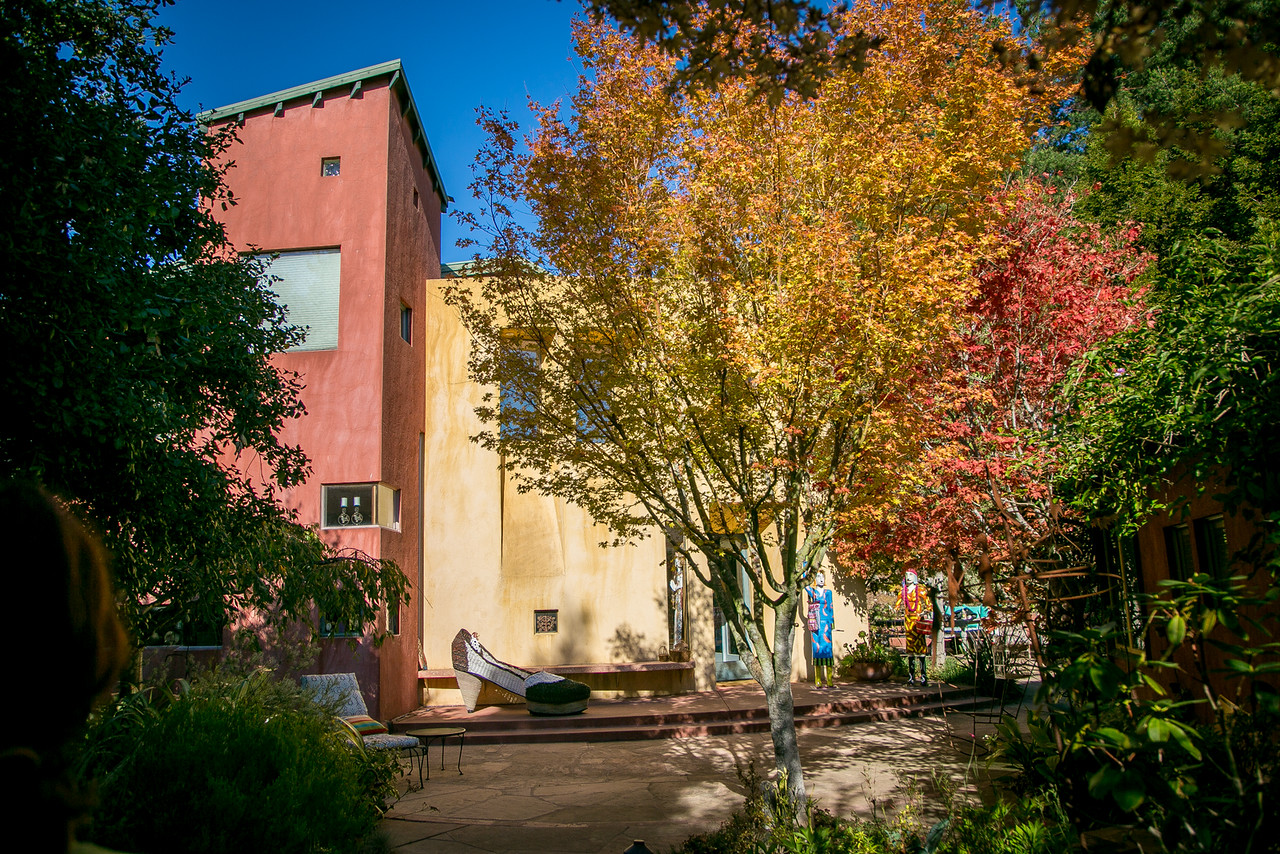











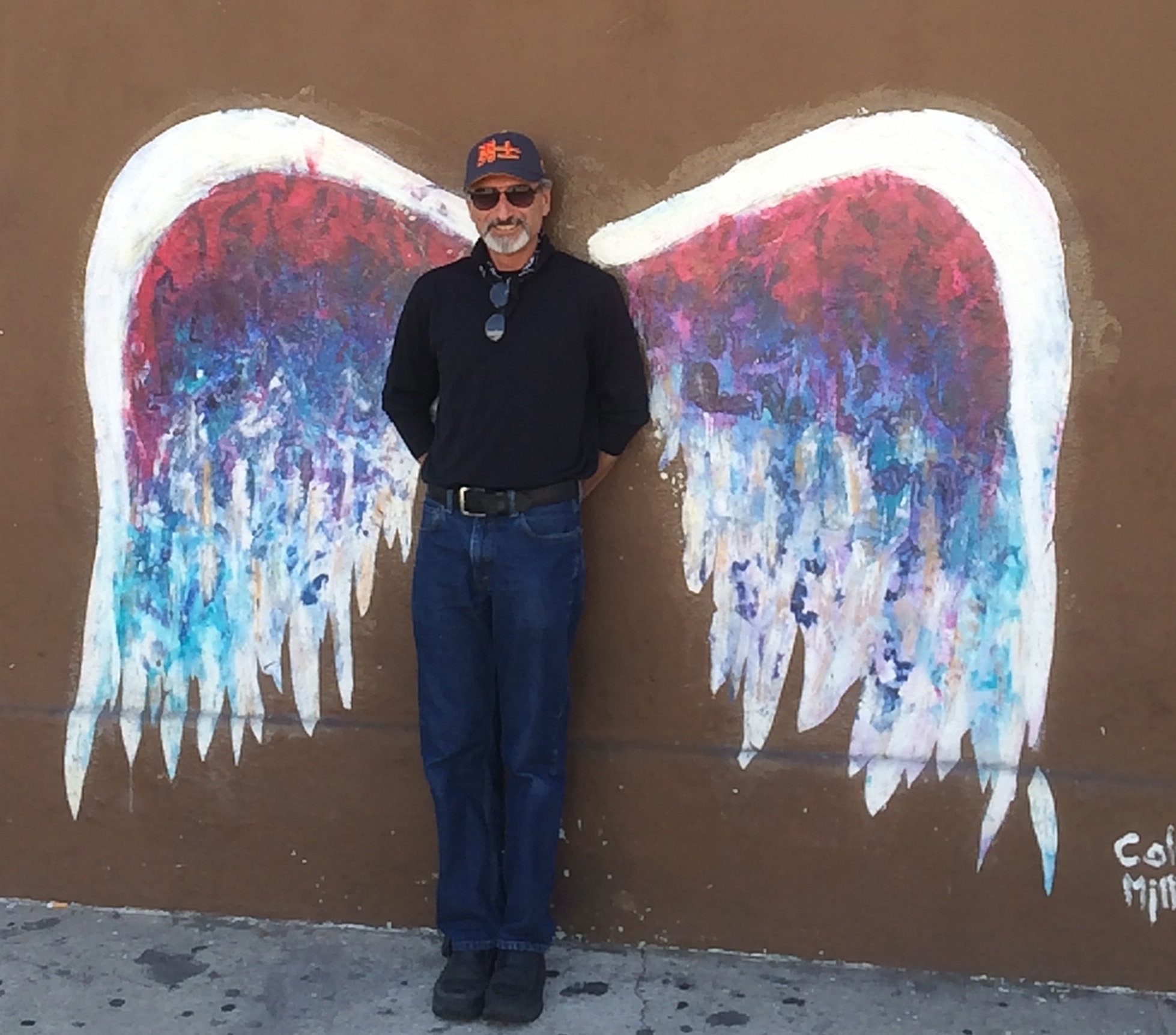




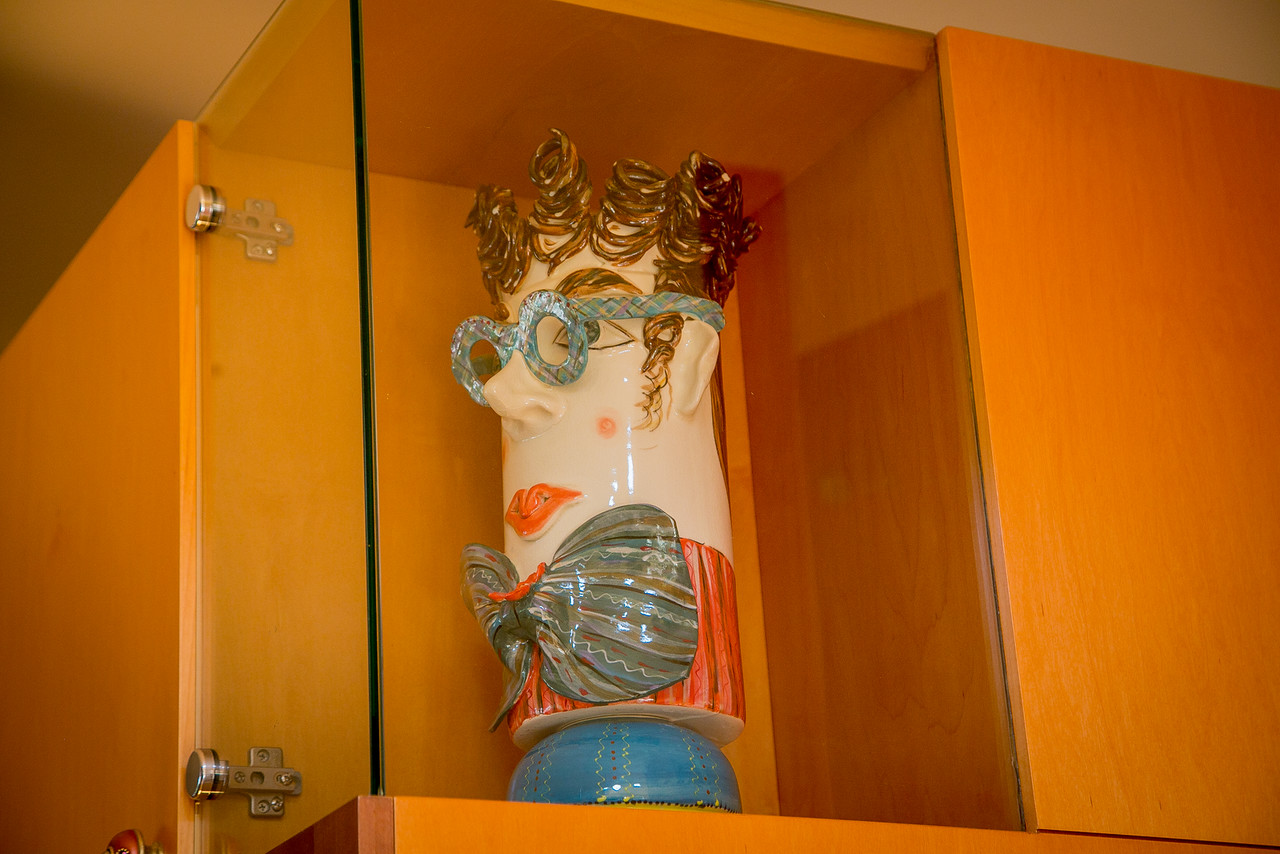


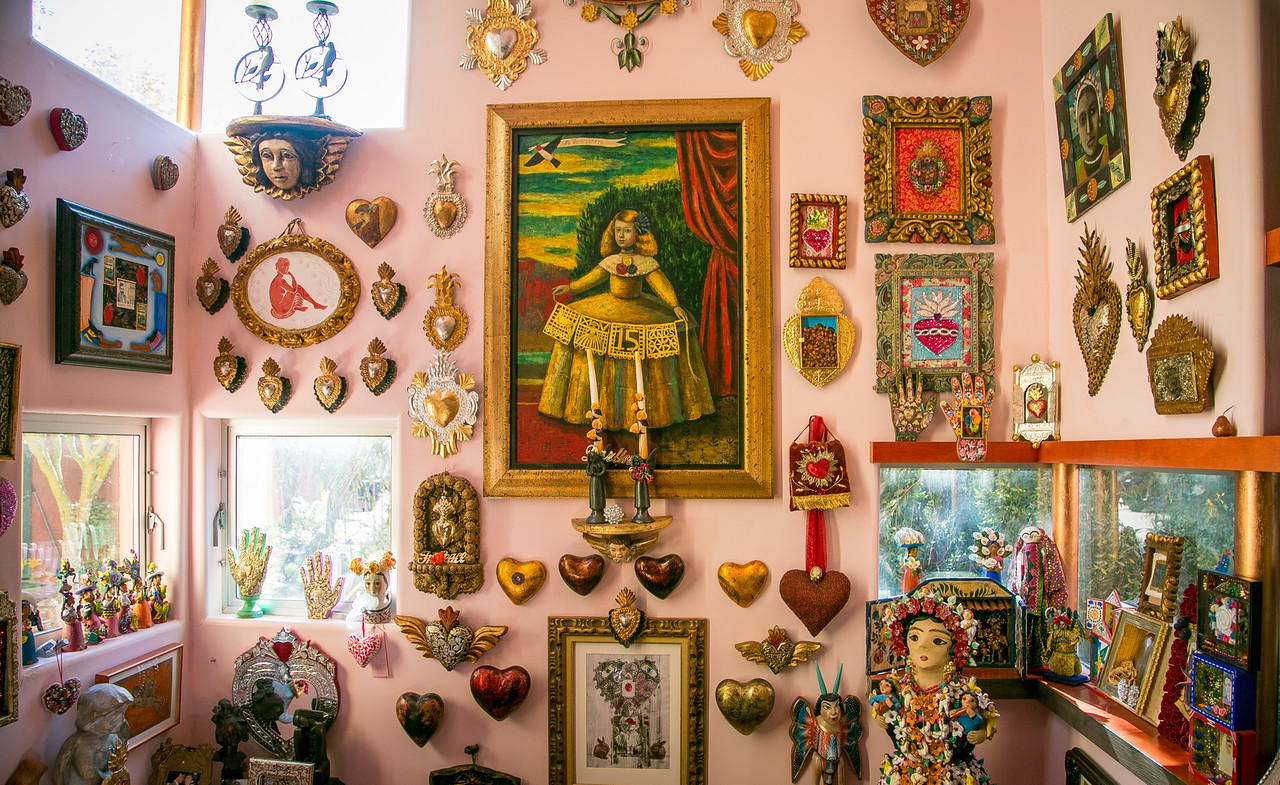









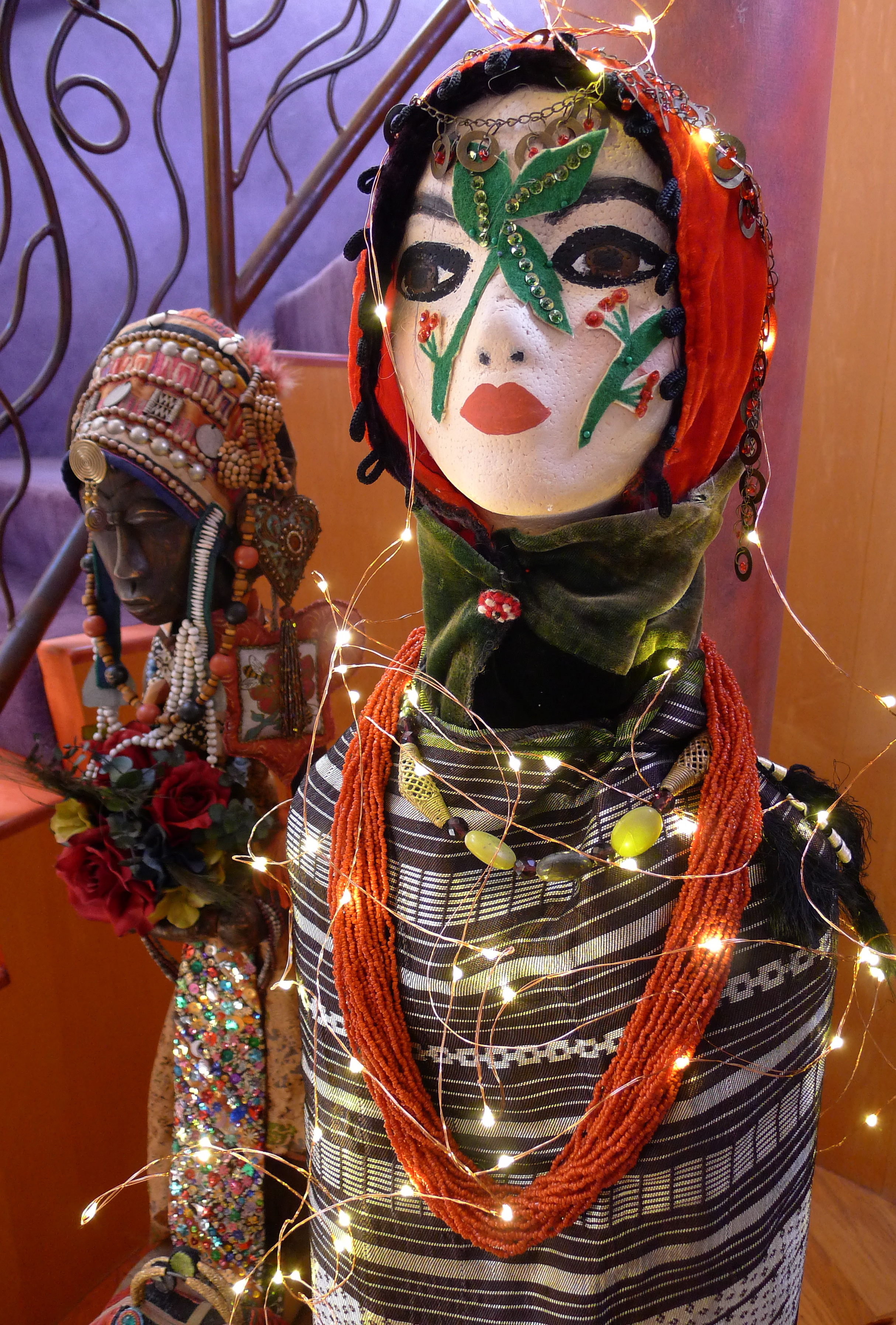




















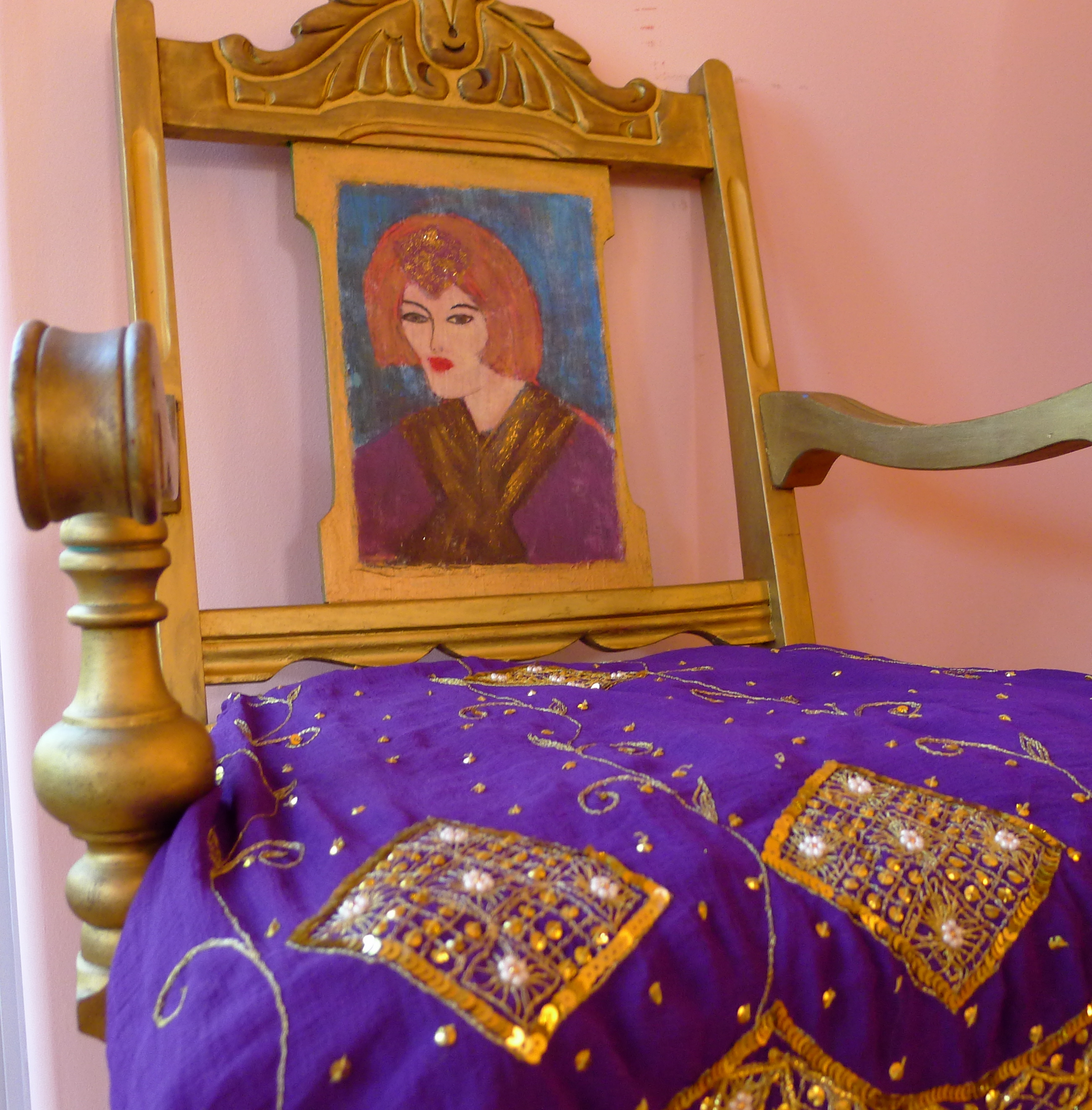








Absolutely GREAT !!!!! This is what I love about Berkeley and I thank you so much for bringing these treasures and the people that are the REAL treasures to us.
All the best, Doug
I want to move to Berkeley!
Awesome commentary on a fabulously intelligent and creative couple!! Perfect Quirky Berkeley!! The home is an incredible museum of color and artistic meanderings…whether homemade or gathered from world travels or Berkeley travels…it’s a feast for the eye and imagination. Arlene Mayerson is truly a treasure…both for her passion and devotion to establishing and enabling disability rights to her eccentric creation and collection of fantastical art…an amazing home and woman…one of a kind!
Great photos and your commentary capture the breadth of the collection.
Thanks!
P